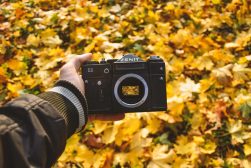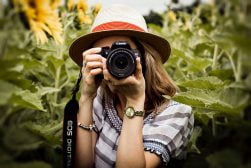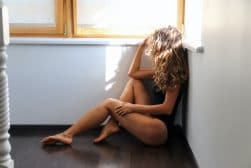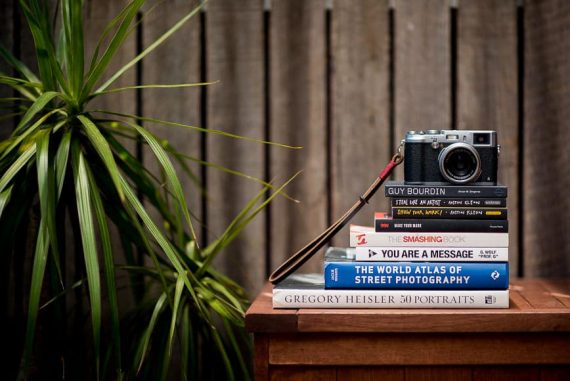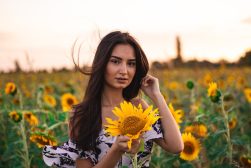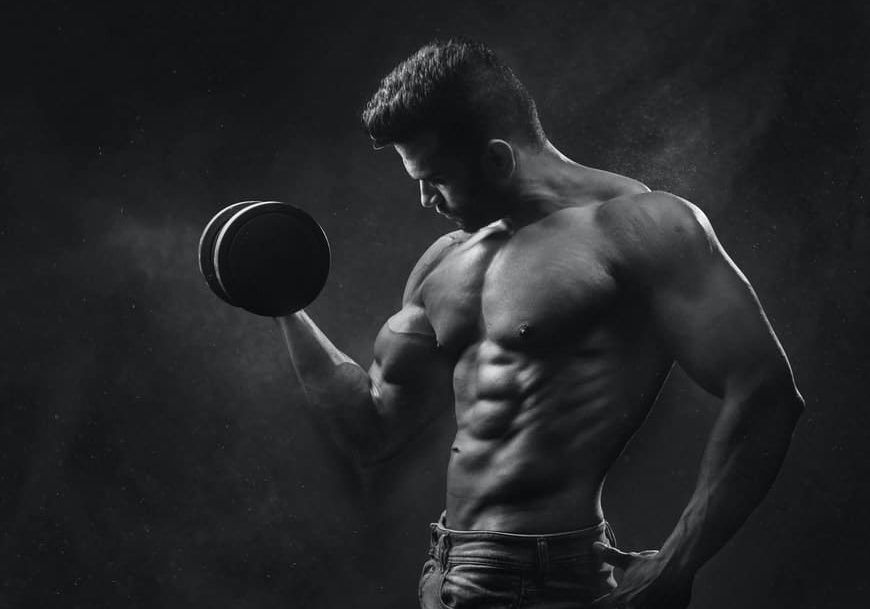
Guide to Fitness Photography for Photographers & Models
Learn how to look ripped in photos, how to pose for muscle pictures or light a fitness photoshoot: a guide to fitness photography for models & photographers.
Learn | Photography Guides | By Ana Mireles
Fitness photography is a category of professional photography that specializes in the world of exercise and wellness.
There are different types of fitness photography. One is editorial and lifestyle, which is usually used in magazines, social media and commercials (e.g. to advertise a gym or a product).
Another is portrait photography – usually required by professional athletes and bodybuilders.
In this article, you’ll find some tips and tricks to have a successful fitness photoshoot, whether you’re a model or a professional photographer looking to specialize in fitness photography.
There’s also an FAQ section at the end for people who are having a photoshoot soon and want their burning questions answered – so don’t forget to check that out.
Ready to join the world of healthy living?! Let’s get stuck in!
Table of Contents
How Do You Do a Fitness Photoshoot?
1. Understand your client

Credit: Pixabay
As I mentioned in the introduction, there are different types of professional fitness photography – as such, there are also different clients who are looking for these services.
It’s important to understand who your client is and how the fitness photos will be used. For example, if they’re for a magazine cover, then you need to use a portrait orientation with some negative space so that the designer can add some text.
If the client is a personal trainer who wants fitness pictures for social media, shoot a wide variety of outfits and choose an eye-catching location.
In any case, the more you know about your client’s expectations, the more satisfied they’ll be with the results of your fitness photography shoot.
When you’re dealing with magazines or marketing teams, they’ll send you a briefing, and things can start from there.
However, if your client is an athlete or a fitness coach doing this for the first time, it might be helpful to offer them some direction.
Have them answer a questionnaire or ask them to collect together some reference photos so that you can get an idea of what they’re looking for.
2. Decide on a location
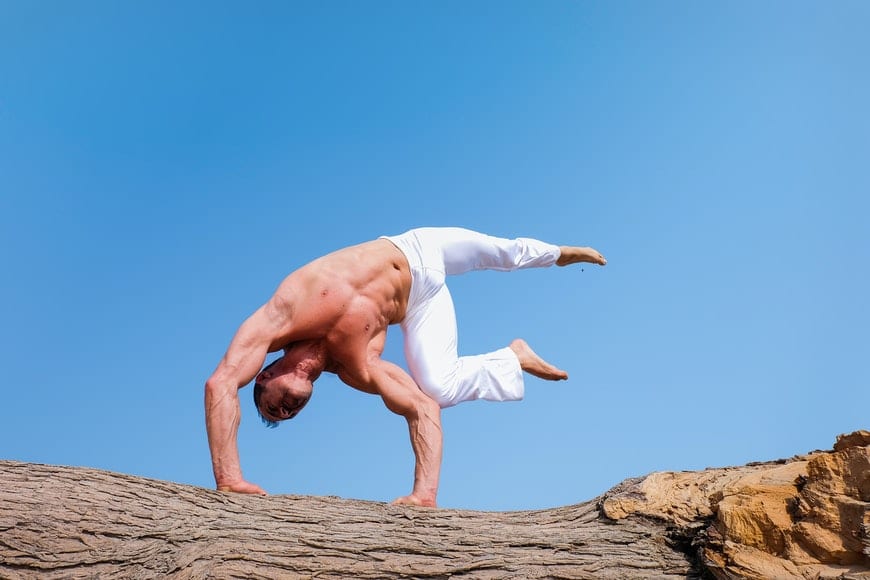
Credit: The Lazy Artist Gallery
Unless you’re shooting a fitness photoshoot for a gym or your model needs a piece of specific equipment, you can take the photos wherever you want.
You can do fitness photography at your studio, at the gym, or on location – this last one can be outdoors or indoors.
The decision should be made together with your client, and you should consider the atmosphere you want to create and the message that you want to communicate.
For example, if the fitness photos are for fitness magazines talking about healthy living, you might consider doing them outdoors.
On the other hand, a professional bodybuilder may benefit from a session in the studio since you want to highlight their body as a sculpture while they perform specific poses and routines.
See our guide for my tips for capturing beautiful body photography.
3. Do a trial run if this is your first fitness photoshoot

Credit: Timothy
If this is your first gig as a fitness photographer, you should practice ahead of time – even if you’re an expert in other types of professional photography.
This, of course, applies to all photography fields, but fitness photography can be a bit tricky.
Let’s say you’re shooting in a gym. Odds are, you’ll be facing a complex portrait lighting setup that’s confusing for a photoshoot – especially because of all the mirrors that can create annoying reflections.
You can practice by enlisting some friends as your models – even if they don’t have the bodies or training of professional athletes.
Another idea is to hire fitness models and do some sessions for yourself. This will give you the experience you need when facing real clients, and you can use the images for your portfolio. You might even sell them on stock photography websites.
Remember that you need all the necessary permissions to shoot and then publish and/or sell your fitness photography images.
Have everyone in the picture sign a model release and get a property release by the gym owner – otherwise, you can’t use the photos.
You can get a free photography contracts template and a model release here.
4. Use a shot list

Credit: Elina Fairytale
A shot list is a great way to organize a fitness photoshoot to optimize the work for you and your models.
For example, if some of the activities require a specific type of equipment, maybe you want to do all of those photos together instead of changing lighting or location constantly.
The same goes for the athlete’s workout. It might be better to do all the hard work first so that the body is pumped for the posed photos – or maybe they prefer to do photos where they warm up first and build up to the intense exercises later.
This also depends on the type of activity: the routine and requirements are different for bodybuilding than for yoga or pilates. Remember that fitness photography covers all sorts of sports and techniques.
Either way, in every fitness photoshoot, I recommend that you include a variety of posed images and some action shots.
Also, consider some close-ups – this will help you show a specific part of the body or facial expressions. If you’re doing a fitness photography session for commercial purposes, make sure you do some close-ups of the product or the equipment you’re promoting.
Finally, discuss with your client which images are absolutely necessary. Maybe they need a sequence showing how a particular exercise is done or a specific idea for a business brochure.
Here’s how to create a shot list for your next fitness photography shoot.
5. Discuss wardrobe and props with your client
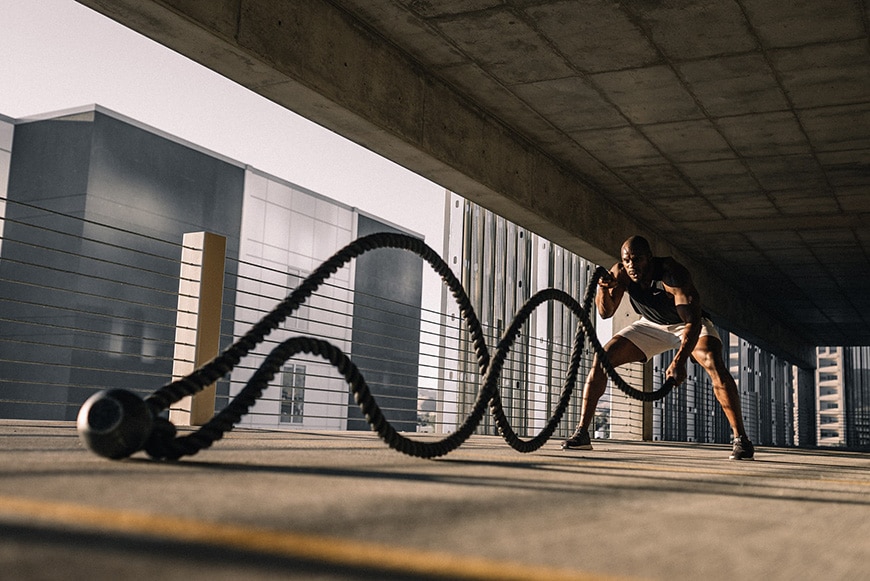
Credit: Karsten Winegeart
It’s always a good idea for the model to have two or three looks to change into throughout the photoshoot. If the outfit is a two-piece, try to balance it out – a short bottom calls for a bigger top and vice-versa.
Avoid any busy patterns or clothes with big logos, unless of course, you’re trying to promote those brands.
Solid colored clothing usually works best with fitness photography because it allows you to keep the focus on the model and their movements.
The style can be different depending on the style of photos you’re going for. Are they supposed to be fun and dynamic shots to promote a Zumba class? Are they boudoir style to showcase the body of the athlete in a more sensual way?
This will determine what type of outfits work best.
You should consider hiring a hair and make-up professional for the session too, even if people don’t normally do this to go to the gym. For professional fitness pictures, you need to take care of the details.
The athlete’s equipment becomes a prop during a photoshoot, so make sure it’s in good condition.
Also decide if you’re going to do some special effects – for example, smoke bombs or flour, which are very trendy in certain types of fitness photos.
6. Master the lighting
Of course, the lighting is related to your photography style, but lighting fitness photography needs special consideration.
If you’re shooting inside a gym, consider bringing additional light sources that you can control instead of using the ambient light.
You might have to deal with mirrors, so be careful about light reflections and having yourself or your equipment showing up reflected in the background.
Certain sports and activities are perfect for natural light – for example, cardio workouts or a simple healthy lifestyle shot. In this case, you can do the photoshoot outdoors or use window lighting if you’re indoors.
Male physique photographers often work in their studios. This gives you more control, but you have to know how to work with studio lights.
Even if you’re a photographer with portrait experience, you might be wondering: How do I get perfect muscle lighting?
The idea is to place the light source from an angle – this way, you’ll create strong shadows that contour the muscles, adding depth and volume.
Here are a few ideas:
- Cross lighting – Put a key light on one side and an accent light on the other. This helps to sculpt and shape the body.
- Rembrandt lighting – This setup requires a single light source that comes from above and the side. It creates a strong contrast between the sides and it’s characterized by the triangle of light that forms under the model’s eye.
- Three-point lighting – Put a light on top of your model angled towards the face (you can use a reflector underneath if you don’t want strong shadows). Then add a softbox on each side of the model a little bit behind him or her – these will work as rim lights.
7. Don’t forget about posing

Credit: Niko Twisty
Many fitness photos are action shots – these are great because they are very dynamic and real.
However, it’s always good to have some posed fitness pictures. Some of them are a given because the model might be a fitness professional like a bodybuilder, but even if it’s an athlete, they can benefit from these types of pictures for their social profiles or website pages.
So, the body is already in great shape, no question about that, but how should I pose for muscle pictures?
First of all, find inspiration online and make a collection of reference images. This advice applies whether you’re the photographer or the model: it helps the photographer to better direct the model and the model to show the photographer what they’re looking for.
All the poses should be aimed at highlighting the model’s shape and strength – flexing the muscles is the best way to achieve this.
Keep an eye on the facial expressions: even if the athlete is making a tremendous effort, they need to look empowered, not like they’re suffering.
Here are some posing ideas you can use:
- Arms crossed
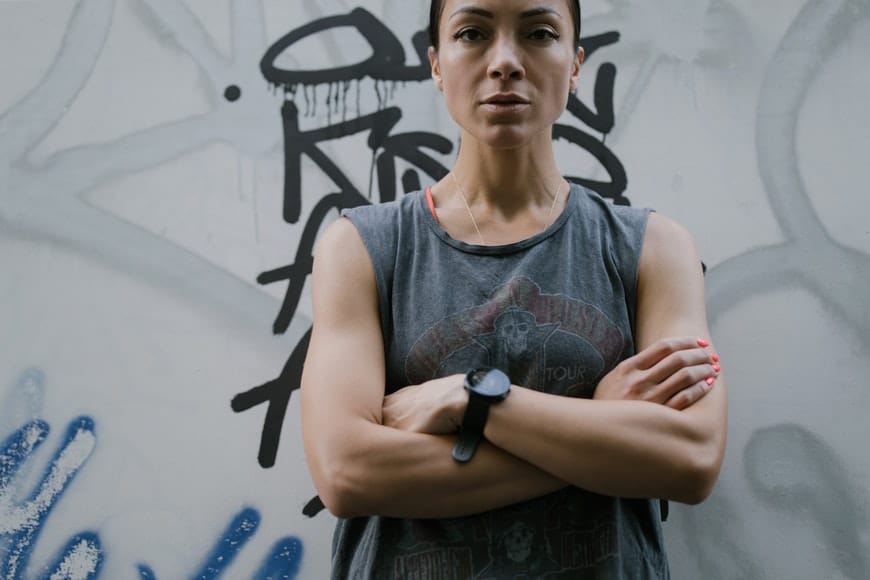
Credit: Cottonbro
- One arm flexed
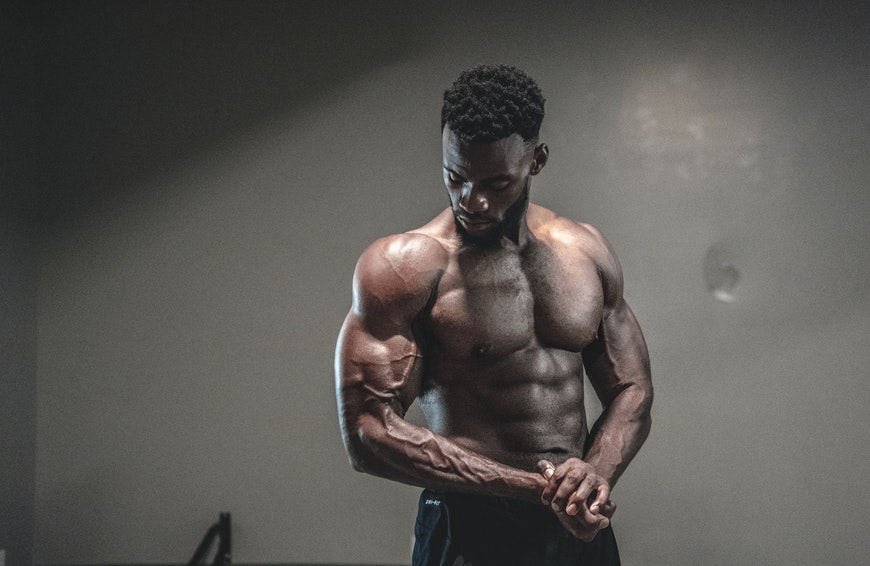
Credit: Pikx by Panther
- Plank
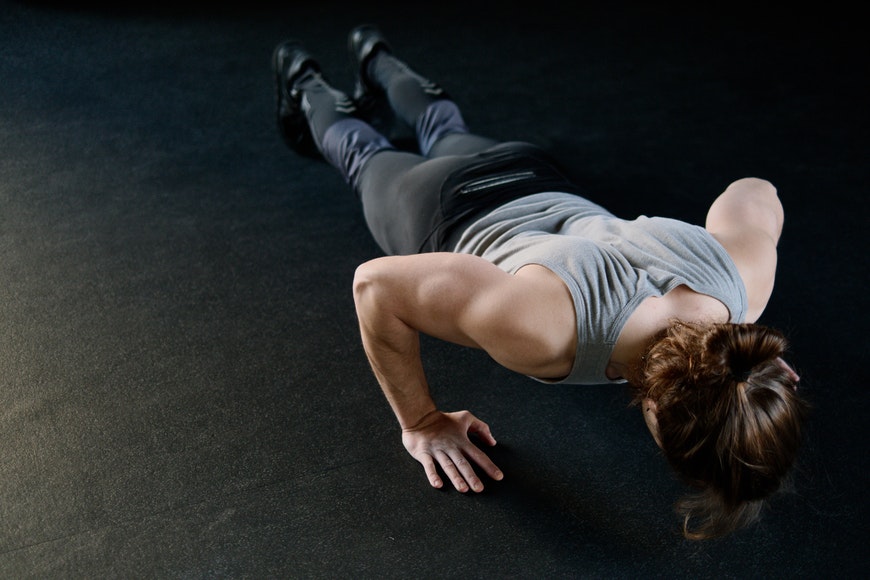
Credit: Ivan Samkov
- Lift the shirt to show the abs
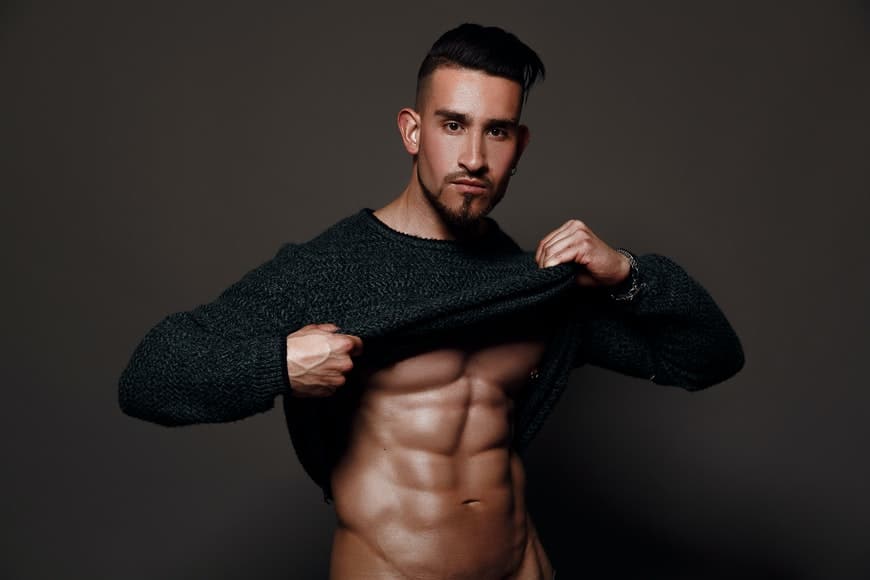
Credit: Dani Alejandro
- Flex the back with a lat machine
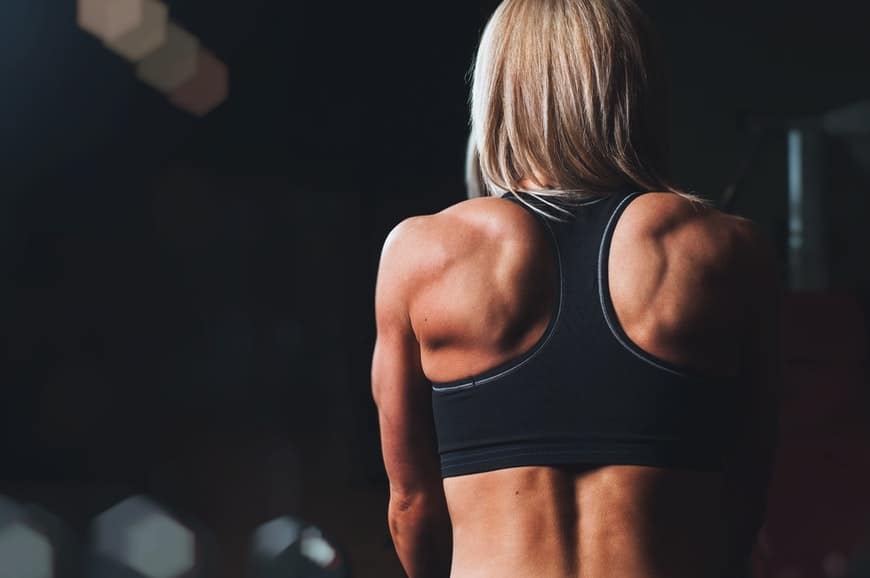
Credit: Scott Webb
- Looking in a mirror
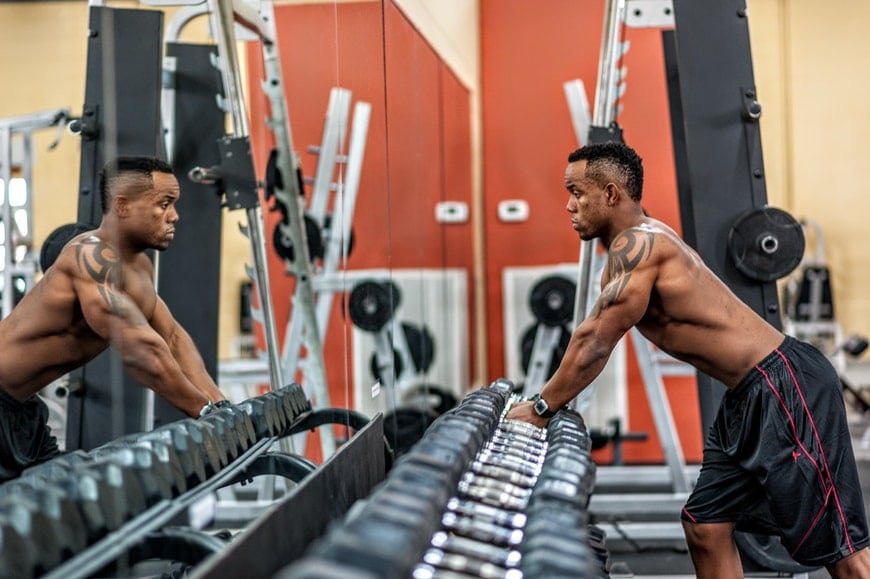
Credit: Joseph Wayne
- Using the equipment
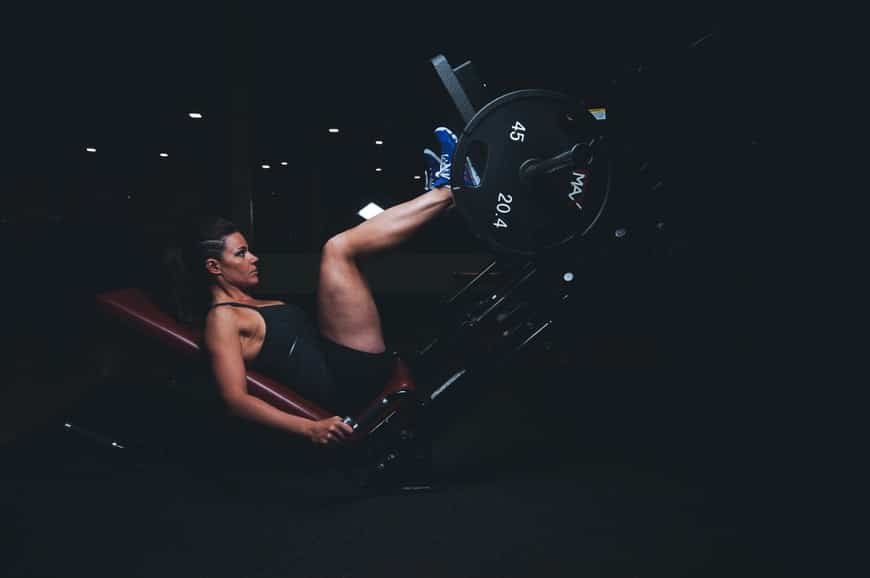
Credit: Scott Webb
8. Edit your photos
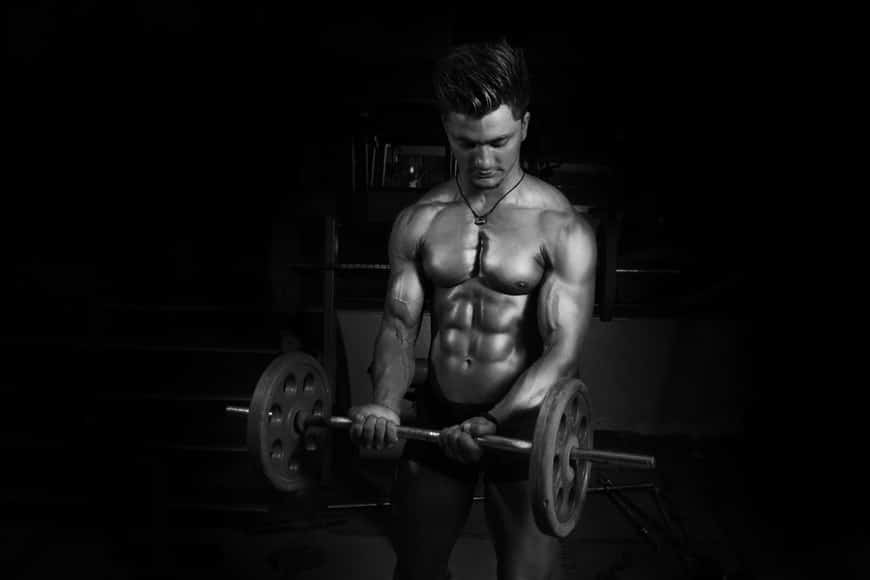
Credit: Dreamlens Production
Post-processing is the finishing touch for professional photography results – and this certainly applies to fitness photography.
For fitness photos, you want to do all the usual photo editing, and on top of that, there are a few points that need special attention in this type of shot.
First of all, white balance – if you shot inside a gym with ambient light, you’ll probably need to adjust it.
Also, increase the contrast to highlight the muscles and do some dodge and burn to really highlight the volume.
The clarity slider can also bring out the musculature of your fitness model but pay attention to any wrinkles, which may also be brought out.
Don’t retouch the body unless your client asked you to, and obviously, don’t do any retouch that you don’t feel comfortable doing.
This is always a sensitive issue on both sides, so it’s better if you discuss the limits and expectations of both parties beforehand.
Finally, keep your editing workflow consistent with your fitness photography so that you can develop a recognizable style.
FAQs for Fitness Models & Professional Athletes before a Photo Shoot
What should I bring to a fitness photoshoot?
- Different outfits
- An extra pair of shoes
- Baby oil
- A bottle of water
- Healthy snacks
- Your exercise gear (if you’re going on location)
What should I eat the morning of a fitness photoshoot?
Avoid anything that can make you bloated such as dairy products, beans, and high fructose fruits – you can substitute them with soaked beans, rice or soy milk, orange, grapes or dark berries. You can also focus on eating anti-bloating foods like ginger, fennel, lemons, avocados or papaya.
How do bodybuilders take good pictures?
You can rub on some oil, then spritz water on top to create a nice texture. Also, have the light coming from the side to highlight the volume of the muscles. Posing is extremely important to flex and show the body in the right way – you can look for inspiration in magazines or social media.
How do you look ripped in pictures?
Shave the body hair so that the definition of your muscles is showing. Also, get a tan if you can. Flex the muscles and show them from an angle. Also, hard light coming from the side will create deep shadows that add depth and make your muscles pop.
Should I fast before a photoshoot?
It’s not necessary. You should only be careful about what you eat – make sure it’s nothing that bloats you. Having a consistent diet is actually good for your body, and bringing healthy snacks with you will help you keep up your energy if the photoshoot lasts long.
How can I make my abs look more defined in pictures?
Before the photoshoot, get tanned – it can be natural or fake tan. Exercise right before the shot – this will get the blood flow going – then rub on some baby oil. Finally, you can increase the contrast while editing your pictures to make the shadows darker. This makes the muscles look like they have more volume.
Final Words
I hope these tips can help you kick off your journey into fitness photography.
With a bit of practice and self-promotion over social media, you’ll soon be on your way to becoming a professional fitness photographer. If you have any questions or suggestions, drop us a line in the comments.





